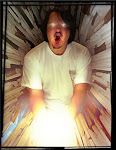A Sample of my 3D rendered Car Designs and Illustrations.
Transportation [Car Design]
3D Rendering, 3D Design, and 3D Printing for Automotive
Automotive design is what I was trained in at both CCS in Detroit, and finished up at Art Center in Pasadena California with a Degree in Transportation Design Fall of 1991. My first few jobs were sketching Car commercial mood boards and storyboard frames out of school, a typical path for many aspiring Entertainment Design seeking Transportation Design majors going into work in Hollywood. I worked on a dozen or so commercials in 2D for Mitsubishi, Chrysler, Lexus, Cadillac, Lincoln, Ford, and others. The directors liked to hire car majors as we were specifically trained to get the product right, the car. so we also ended up developing the futuristic set designs behind the cars as well as most of us were all Science Fiction geeks as well.
As time went on the development of 3D rendering has become photo realistic, with over 90% of the television and print work you see is actually not photography any longer, but 3D rendering of a Digital or Virtual Car. For 3D Automotive work I have worked on Lotus, Mitsubishi[ again], Honda, Hyundai, Smart Car US, and a few others.
I have been working on virtual cars since my first full car in 3D back in 2003 for a pitch we made at The Cimarron Group to Lotus for the US launch of the Elise. At the time the cars were not in the US, though they did the show circuit and were at an LA auto show. I found a full set of pictures online as well as a blueprint for basic dimensions and proceeded to hand built the car from scratch in 3D.
As an advanced surface artist, 3D modeling a car was a virtual version of working in clay,. only the speed was much faster. A clay model was about 200 hours or work to finish, and I build out the full exterior of the Lotus in about 50 Hours. Mirroring objects that is available in 3D allows for perfect symmetry and you basically build half the car at a time and then modify each side for side specific details.
I have built my favorite car as well, a Vintage Volkswagen Bug for the rebooting of the Herbie franchise for Disney and got to build a 1963 Rag Top bug, from every part inside out and x-ray. This was used in the advertisements on TV and trailers in theaters.
Some clients like Honda wisely provide the model to you, so your time is spent dialing in the materials and lighting of the car. For this part a fellow ACCD grad and I were honored to visit a ACCD Grad Jerry Garns a master at automotive lighting, and translated his studio lighting into our 3D world.
My most recent adventure in 3D Transportation work and been to build out a full 3D asset for 3D Printing of a 1937 Sterling-J Pre War semi truck. The truck is currently being constructed out is Northern California, and I can't wait to see the final results.
I have added a button on the right to quickly reference this in the future.
If you need a visualization or a 3D Model build or a piece of transportation design please contact me.
Cheers, THOM
NOTE: Blogger is limiting Image Size, a full size detailed image can be seen at this link.
















































